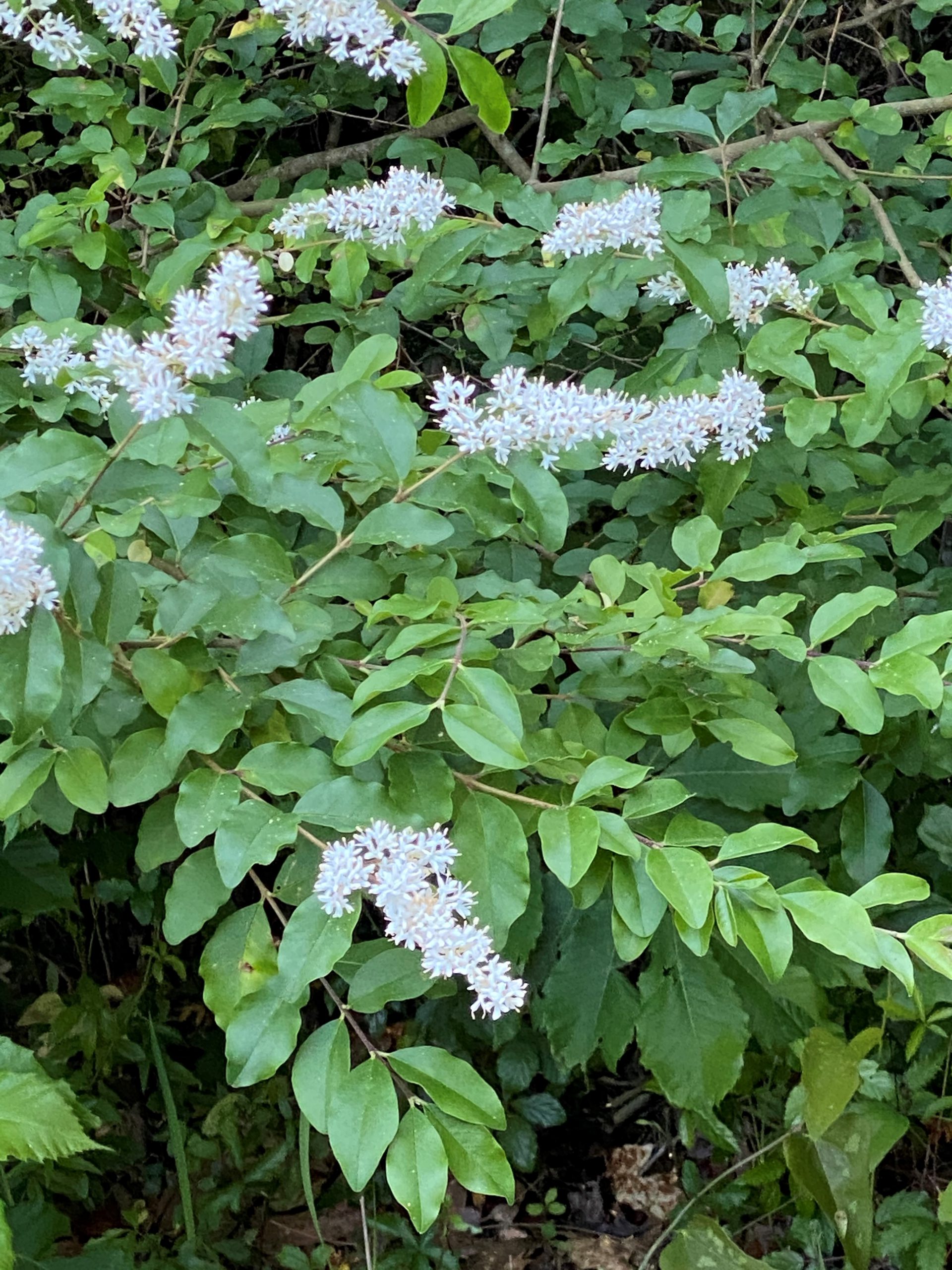Six Rivers “Dirty Dozen” Invasive Species
Chinese Privet (Ligustrum sinense)
Define Invasive Species: must have all of the following –
- Is non-native to the area, in our case northwest Florida
- Introduced by humans, whether intentional or accidental
- Causing either an environmental or economic problem, possibly both
Define “Dirty Dozen” Species:
These are species that are well established within the CISMA and are considered, by members of the CISMA, to be one of the top 12 worst problems in our area.
Native Range:
Chinese privet is from China.
Introduction:
Was introduced to the U.S. in 1852 as an ornamental plant often used as a hedge. It escaped cultivation and has spread across the Florida panhandle and into the peninsula as far as Hillsborough County.
EDDMapS currently list 12,702 records of this plant. They are scattered across the southeastern United States, west as far as Texas and Oklahoma, and north into the mid-west and as far as Connecticut. There are 1,883 records in Florida. 1,740 in the panhandle and 143 in the peninsula. There are 1,461 records within the CISMA. This is CERTAINLY underreported.
Description:
Chinese privet is a perennial shrub that can grow up to 16 feet in height. It has smooth bark and dark green elliptical leaves which are arranged opposite from each other – this is noticeable from a distance. Each leave is 1-3” in length. The small flowers grow from short branches at the ends of each twig. The slate blue fruits contain 1-4 seeds and can persist throughout winter. Seed dispersal is often aided by consuming wildlife.
Issues and Impacts:
This is a fast growing plant that can form dense populations in uplands and wetland areas. It quickly outcompetes native plants for space and is often the dominant plant within the system. It is listed as a Florida Invasive Species Council Category I invasive plant and a Florida noxious weed.
Management:
Management techniques depend on abundance of plants in area.
If there are few plants, they can be hand pulled or dug up. It is recommended not do this while in seed as seed dispersal can be a problem while removing.
If mowing is possible it can be effective if (a) you mow close to the ground, and (b) you do so frequently.
For larger areas where mowing and digging are not an option herbicides can be used. Foliar applications of glyphosate (at 25%) have been affective but be careful of overspray. Cut stump applications will work with glyphosate (25%) or triclopyr (1-2 quarts / acre). It is recommended to do herbicide applications in early spring or late fall.
There is no known biological control at this time.
For more information on this Dirty Dozen species, contact your local extension office.
References
Chinese Privet, University of Florida IFAS Center for Aquatic and Invasive Plants
https://plants.ifas.ufl.edu/plant-directory/ligustrum-sinense/.
Early Detection and Distribution Mapping System (EDDMapS)
Six Rivers CISMA
https://www.floridainvasives.org/sixrivers/
- Tips for Bear Encounters this Fall - November 10, 2025
- Pensacola Bay Invasive Species Summer Survey 2025 - November 3, 2025
- Our Environment: Part 24 – Our Changing Climate - November 3, 2025

